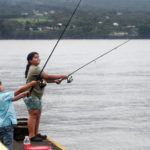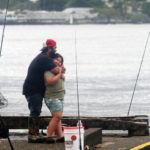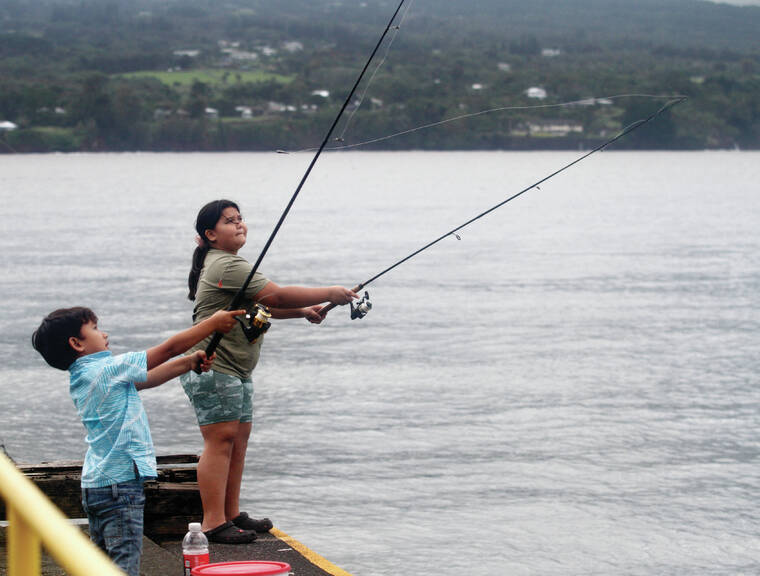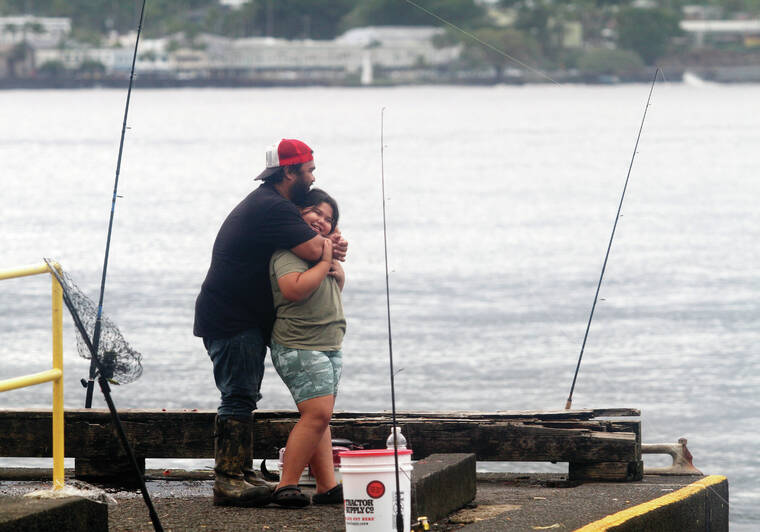A school of bills that would update fishing policies in Hawaii are rocking the boat for many fishermen.
Whether it be House Bill 758, which would allow the state Department of Land and Natural Resources to offer special fishing permits to Native Hawaiians exercising their traditional cultural practices, or Senate Bill 92, which puts expiration dates on the state’s community-based subsistence fishing areas, fishing bills moving through the state Legislature have advocates for fishers and Native Hawaiians alike pushing back.
HB 758 attempts to solidify constitutional protections for Native Hawaiian cultural fishing practices by allowing the practitioners to receive a special activity permit from the DLNR. While the bill would not require Hawaiians to obtain a permit in order to exercise their customary practices, it would help avoid situations where practitioners are cited or arrested for seemingly breaking the law.
“Despite these constitutional protections, individuals who choose to exercise their rights to gather aquatic resources in ways that contravene state fishing laws are subjected to the risk of civil and criminal citation and arrest before being afforded an opportunity to validate their traditional and customary rights,” reads the preamble to the bill.
However, the bill has not been well-received. The Office of Hawaiian Affairs found the proposal deeply troubling, warning that it would establish an easily abusable method to regulate cultural practice.
“The equivalent implementation of this proposed policy would see members of any religion being subject to an optional permit to better assist law enforcement in determining which worshippers were legitimate practitioners, for their own protection,” read an OHA statement.
Hilo Sen. Lorraine Inouye, a co-introducer of HB 758’s companion Senate Bill 1036, washed her hands of the measure Monday, saying it is “not a good solution,” and that the Legislature’s goal should be to allow Native Hawaiians to self-regulate their cultural activities, not throw another layer of bureaucracy between them.
SB 1036 was deferred last week.
Other fishing-related proposals have not been much more popular. SB 92 would make community-based subsistence fishing areas such as the one formed in Miloli‘i last year temporary, with terms set to expire after a yet-to-be-determined length of time. The measure also would require evaluations of a CBSFA by the DLNR every five years.
Inouye, also an introducer of SB 92, said the measure would allow for greater flexibility and community input. For example, she said, if there comes a period where fish populations within a CBSFA become abundant, then a community may wish to relax the terms of the area, but might be unable to do so under the current laws.
But many disagree, with dozens of fishermen, Native Hawaiians and wildlife advocacy groups testifying against the proposal.
Miloli‘i resident U‘ilani Naipo wrote that establishing the CBSFA for Miloli‘i required an enormous amount of effort and commitment from hundreds of residents and stakeholders over more than a decade, but probably wouldn’t have been worth the effort if the CBSFA designation had an expiration date attached.
“CBSFA is one of if not the least used designations that we as Hawaiian communities seek to stake claim to because of the tremendous effort and commitment it requires,” Naipo wrote. “Since 1994 when DLNR was given the language and authority to work with communities to establish CBSFAs, we only have 2 today.”
OHA also testified in opposition, arguing the measure was “essentially placing a time limit on Native Hawaiian traditional and customary practices,” while the Hawaii Wildlife Fund urged against any action that could remove protections of vulnerable ecosystems in the face of increasing anthropogenic threats.
Even a comparatively simple bill, such as SB 66, generated controversy.
That bill — also co-introduced by Inouye — would establish penalties of up to a $500 fine and 30 days in jail for harassing fishermen in order to prevent them from taking fish, with the definition of harassment including physically disturbing the fish to scare them off, obstructing the fisher’s access to the water and more.
Inouye said SB 66 was a response to reports from fishermen on Kauai, who were unable to fish near an upscale neighborhood without harassment from residents, with some incidents ending in fights.
“We want to expand the support we can give to our fishers, so that (DLNR’s Division of Conservation and Resources Enforcement) has something to point to if they get involved,” Inouye said.
But again, not everyone agreed. The biggest sticking point was a clause in the bill stating that it does not qualify as harassment if somebody takes photographs or video of a fisher “while over one hundred feet away,” with the implication that taking photographs closer than 100 feet is harassment.
Naipo testified against this bill, as well, arguing that the proposal directly conflicts with what DOCARE and other agencies ask of the public: to report suspected illegal fishing activities, and that no group should be protected from public scrutiny while operating in public areas.
Naipo and several other testifiers noted that there already are anti-harassment laws that should adequately protect fishers, as well as everyone else in the state.
Moreover, several testifiers added that similar proposed bills were introduced several years ago following an incident in 2014, when an aquarium fisher allegedly attacked a diver recording their activities by pulling off the diver’s SCUBA regulator.
Despite their unpopularity, the bills remain alive in the Legislature. HB 758 passed second reading in the House on Feb. 17, SB 92 passed second reading in the Senate on Feb. 7, and SB 66 did the same on Feb. 16.
Email Michael Brestovansky at mbrestovansky@hawaiitribune-herald.com.









